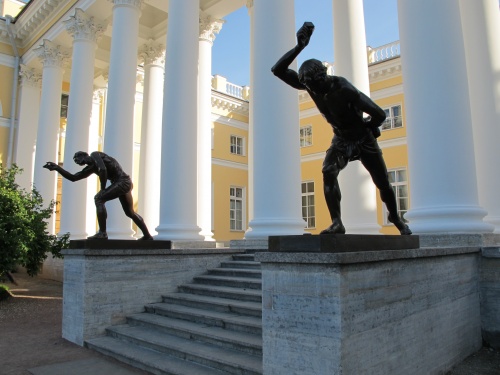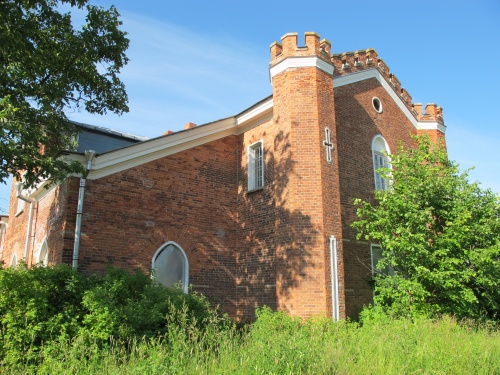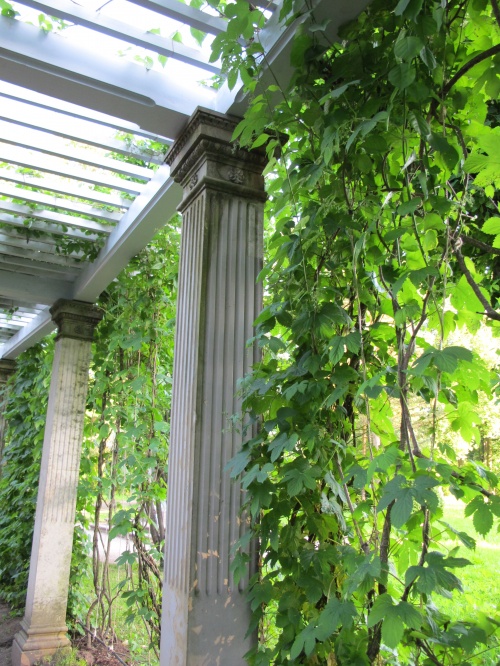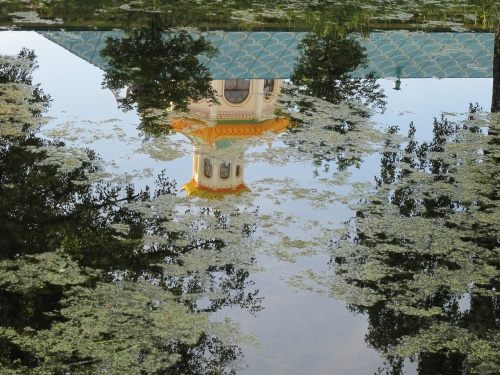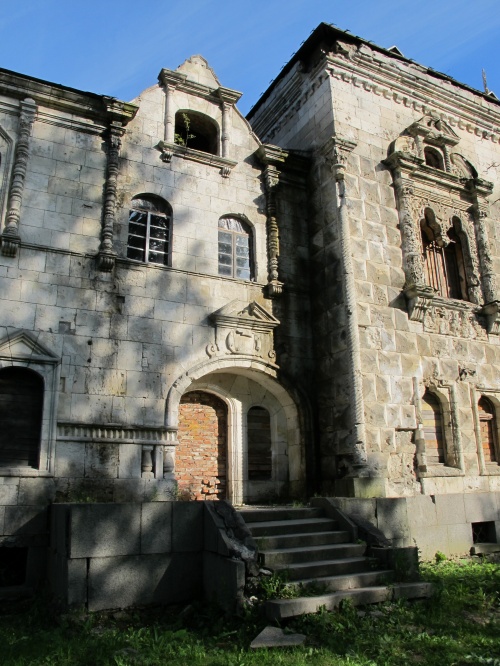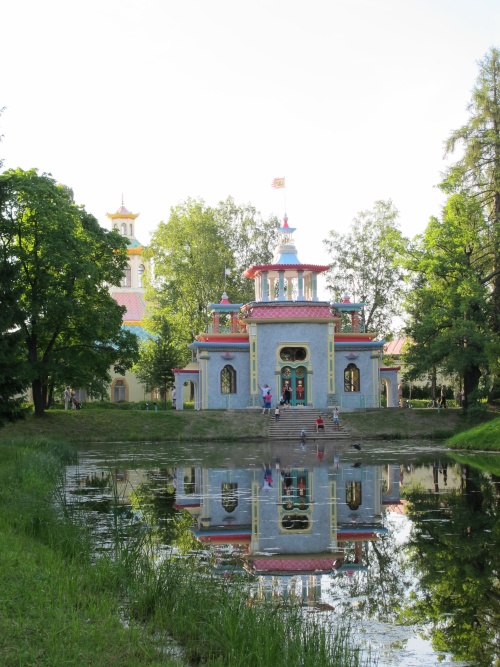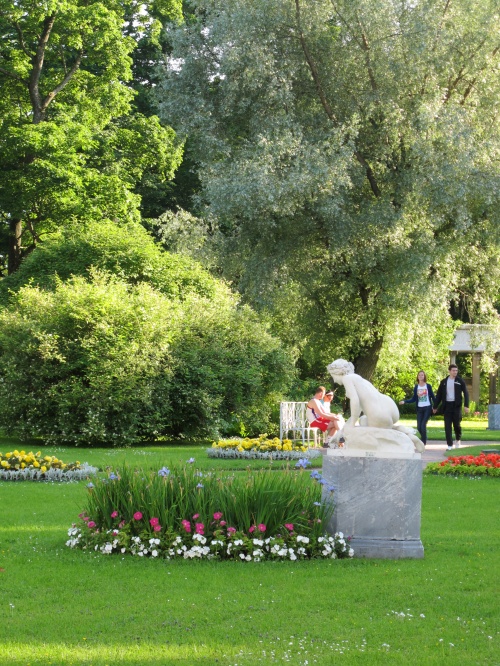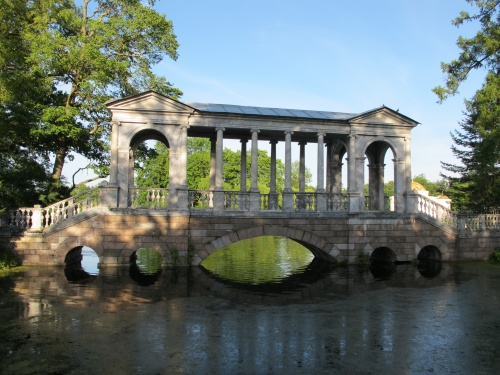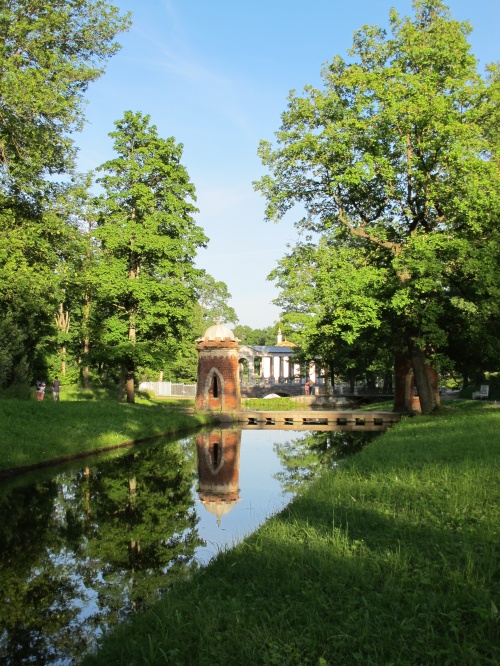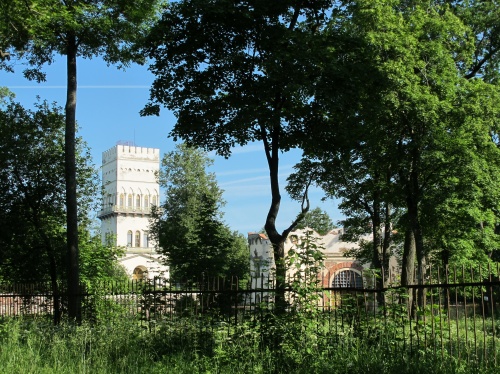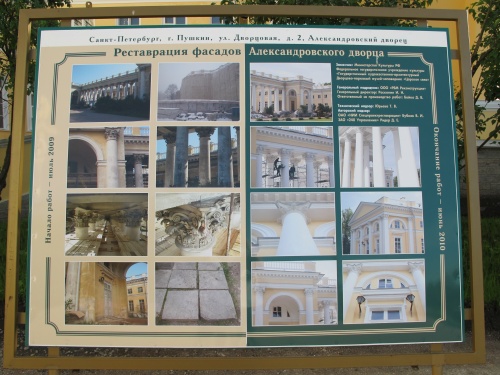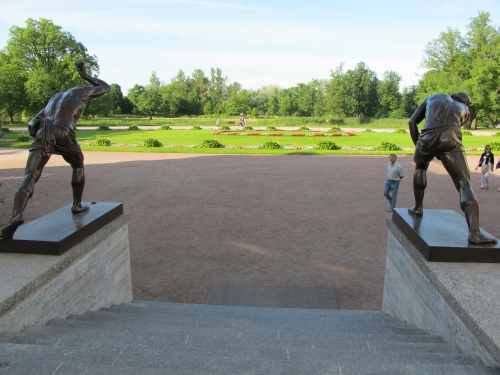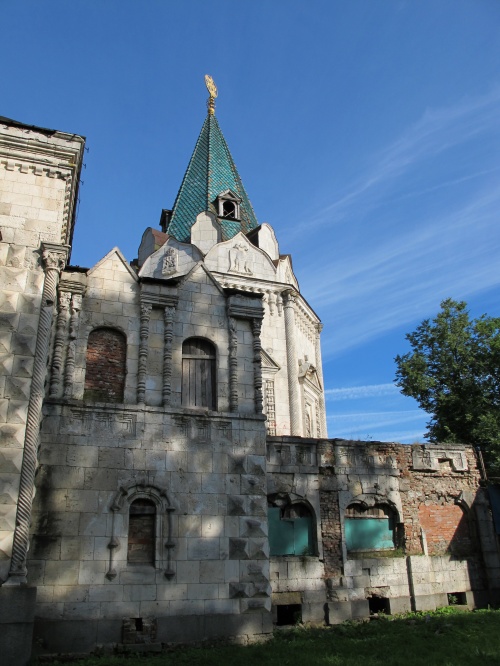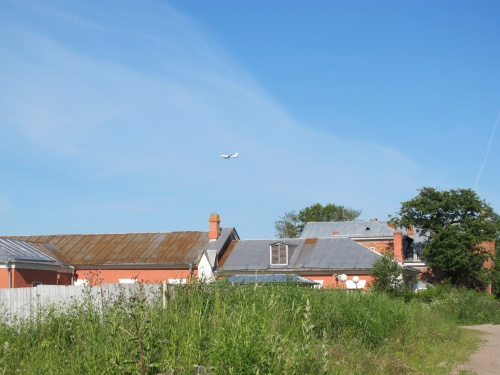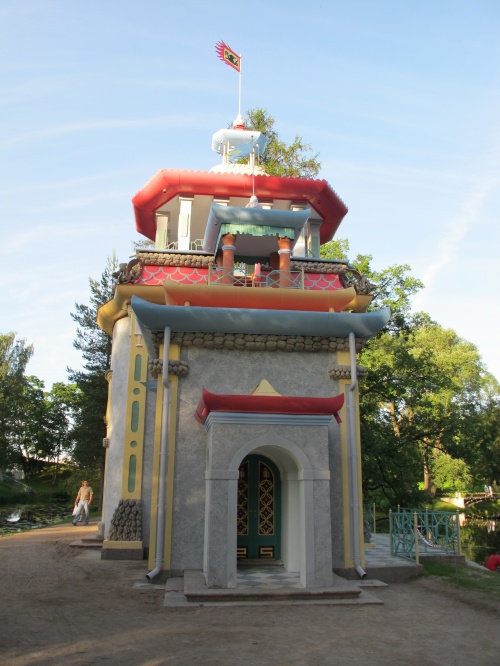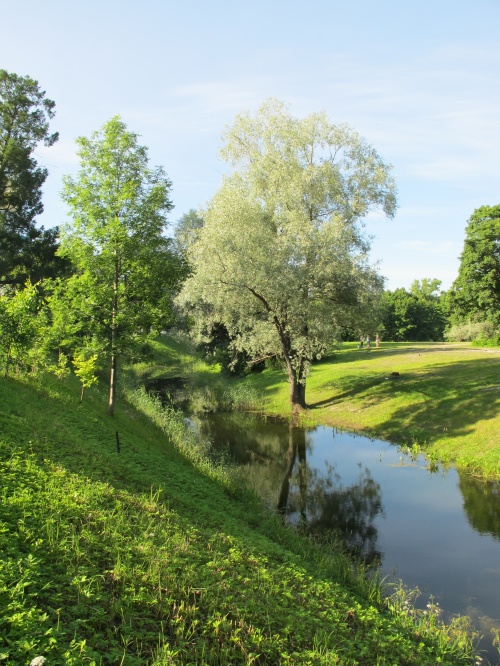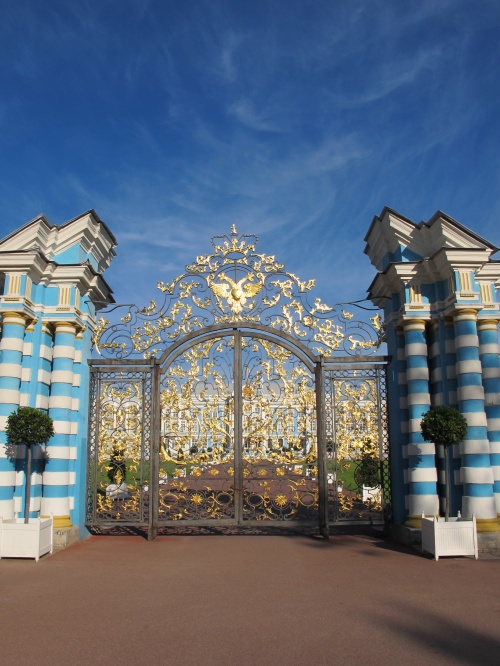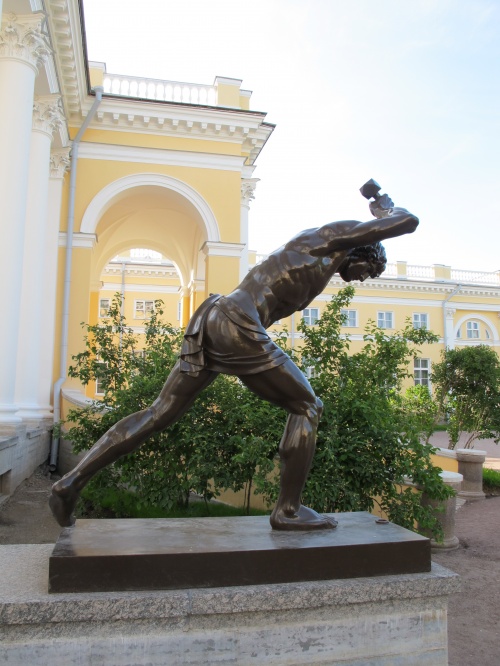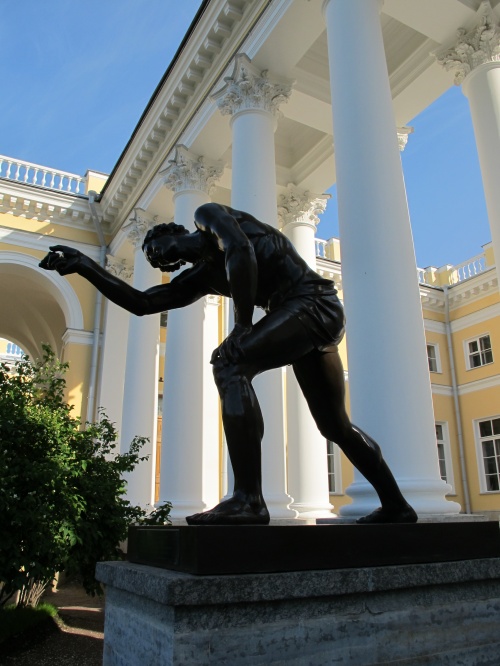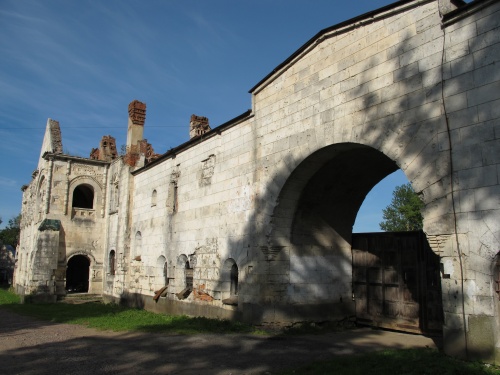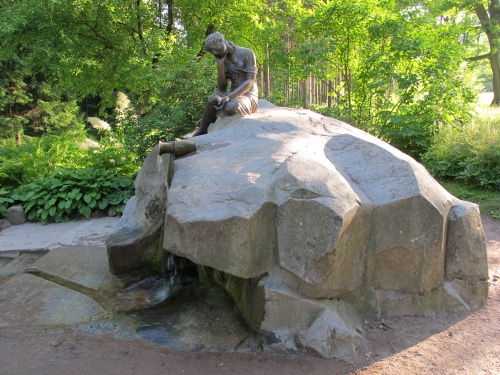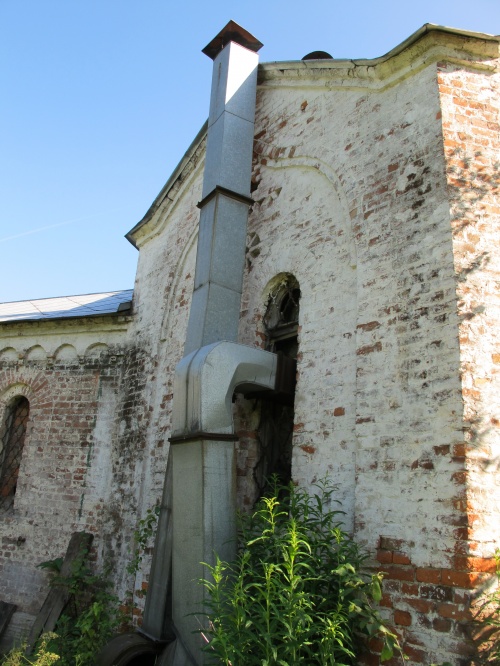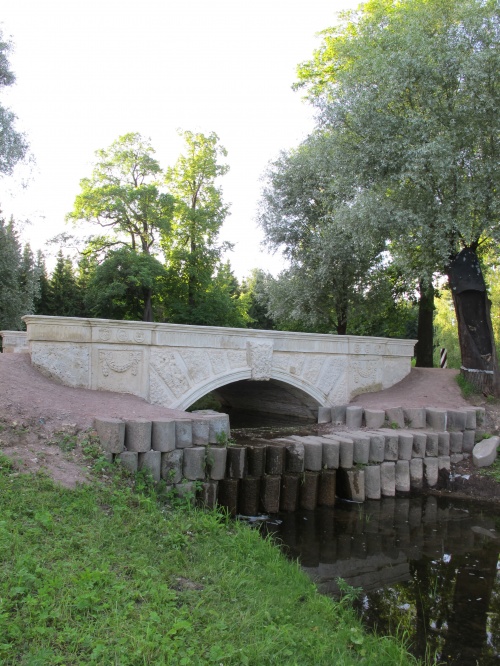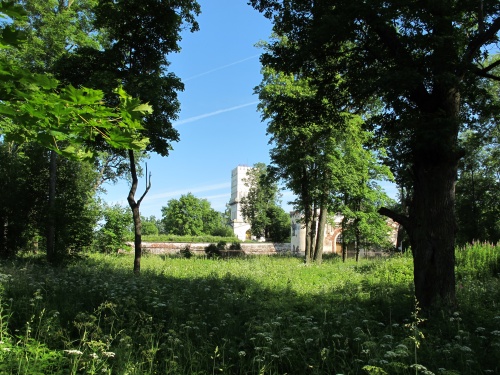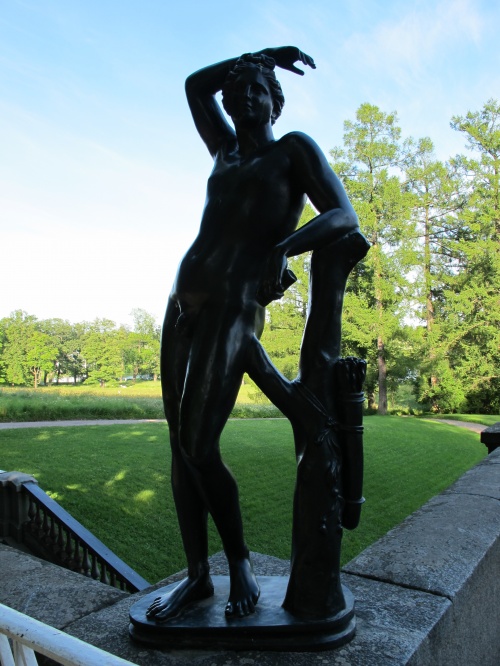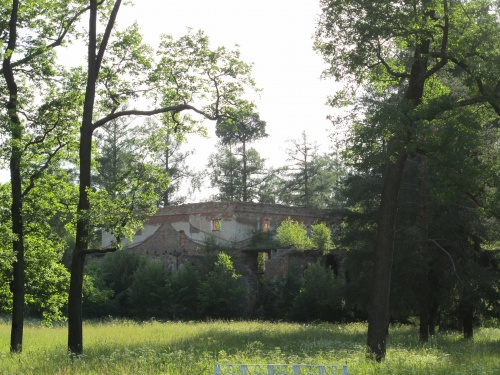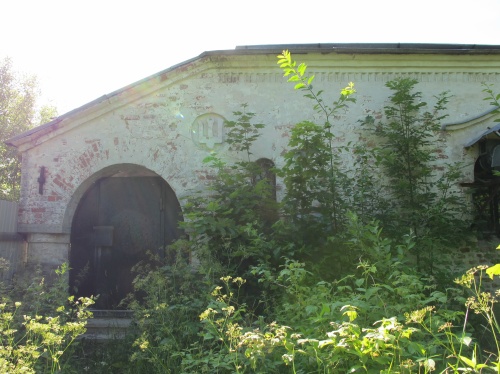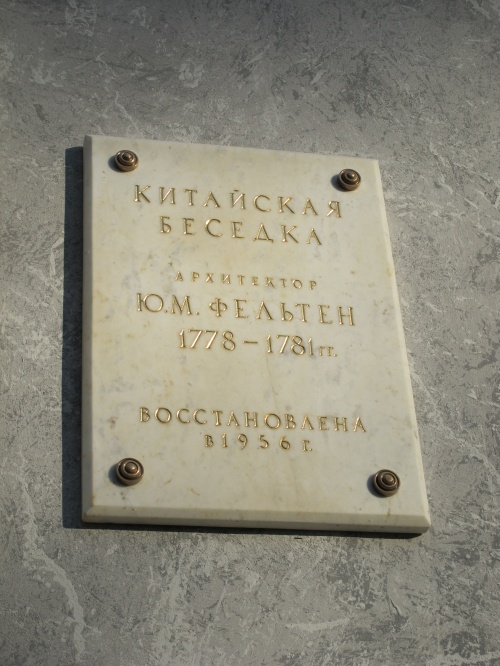Photo excursion - "Walk through the parks of Tsarskoye Selo" (260 photos) (part 2)
The land on which the magnificent country residence of the Imperial Court, Tsarskoye Selo, arose in the 18th century, has been part of the Novgorod lands since ancient times. After the annexation of Veliky Novgorod to the Moscow Principality, these lands became part of the Duderovsky churchyard of Orekhovsky district.
Since ancient times, these lands were inhabited by such now practically extinct peoples as Vod and Izhora, as well as Slavs and Orthodox Finns.
For several centuries, these lands were a bone of contention between Sweden and Veliky Novgorod. The Swedes tried with all their might to seize these territories, thereby cutting off their eastern neighbor's access to the Baltic Sea, which would inevitably lead to the severance of established trade ties and a significant weakening of the Novgorod state.
The border of the two states passed through the territory of the present Karelian Isthmus, and this region, which served as a place of clashes between “hostile armies,” endured all the hardships of the war, regardless of who remained the winner.
At the end of the 16th and beginning of the 17th centuries, the Swedes finally achieved their goal - vast territories that previously belonged to Novgorod came under their rule. The Orthodox population practically abandoned the conquered region, and the Swedes resettled Lutherans - Germans who were persecuted in their homeland - and Finns to the deserted lands.
Having ascended the Russian throne, Tsar Peter Alekseevich (the future first Russian Emperor Peter I) set himself the task of returning the lost lands. Which I did with success.
Having barely occupied the Neva lands, Peter founded a new capital of the Russian state at the mouth of the Neva. He distributes the surrounding territories to his associates and begins to build country residences.
Among the estates of the Koporsky district were (according to Swedish scribe books) Duderovskaya and Sarskaya manors, which, like other vast territories, came into the possession of the favorite of Peter I, His Serene Highness Prince Menshikov. The place where the Sarskaya manor was located was called Saritsy, and appeared in the scribe books of the Moscow principality, when all these lands were distributed to the Moscow noble families of the Bestuzhevs, Ovinovs, Khilkovs...
But Menshikov did not own the Sarskaya manor for long - soon Peter decided to donate these lands to his second wife Ekaterina Alekseevna, who at that time had not yet been declared Empress. Menshikov did not dare to contradict the monarch and in June 1710 the Sarskaya and Slavyanskaya manors, with the villages belonging to them, came into the possession of Ekaterina Vasilevskaya.
In 1711, Ekaterina Alekseevna was officially declared the Russian Empress and the Sarskaya manor received the status of “palace property”. Soon the manor was already surrounded by new villages, where peasants “transferred” from other palace villages were resettled. The old wooden manor house was replaced with a stone one, and the Empress ordered a small park to be laid out around it.
After the death of Catherine I, the manor became the property of Tsarevna Elizaveta Petrovna, the future Russian Empress. Elizabeth did not have enough funds to maintain the manor and the estate buildings gradually fell into disrepair. The only construction that was carried out at that time in Sarskaya Manor was the construction of a stone church.
After ascending the throne, Elizabeth rebuilds her modest estate into a luxurious country palace. The construction of the new imperial country residence was supervised by the Italian Francesco Bartolomeo Rastrelli, the king of the magnificent Baroque. Throughout the reign of Elizabeth Petrovna, the palace was rebuilt - it seemed to her insufficiently luxurious and spacious. Around the palace, a settlement is rapidly growing - Sarskoye Selo - with many inhabitants, one way or another feeding on the palace.
Immediately after her accession, Catherine II appointed Lieutenant General Betsky to manage all the affairs of her Tsarskoye Selo estate. He acted only on the personal instructions of the empress. The crazy spending of Elizabethan times stopped - Catherine counted everything to the last penny. But this benefited Tsarskoye Selo: during the 34-year reign of Catherine the Great, it reached the highest degree of prosperity. A palace was built for Catherine's grandson (whom she dreamed of making her heir, bypassing her son), Grand Duke Alexander Pavlovich. Agate rooms, a Colonnade, and side wings were added to the large palace. The gardens were expanded and many new buildings and monuments appeared in them in honor of the Empress's companions.
Paul I did not like Tsarskoe Selo, like many other things with which his mother’s name was associated. He preferred his other two residences - Pavlovsk and Gatchina.
After the death of Catherine, Paul began the systematic destruction of Tsarskoye Selo: he ordered his favorite architect Brenna (who built the Mikhailovsky Castle in St. Petersburg and built residences in Pavlovsk and Gatchina) to remove from Tsarskoye Selo everything that he considered necessary to decorate the above-mentioned palaces. It was also ordered to demolish the Chinese village, and use the material for the construction of other residences of Paul I. Fortunately, this command remained
unfulfilled. All unfinished buildings in Tsarskoye Selo were abandoned. In addition, some valuable collections that belonged to Empress Catherine were destroyed.
In the first years of the reign of Alexander I, Tsarskoye Selo remained abandoned. Only in 1808 did the Emperor remember the beloved residence of his “sovereign grandmother” and took measures to restore it. During the years of Alexander's reign, almost everything that was destroyed during the 5 years of his father's reign was restored. New buildings have appeared in the parks. The Imperial Farm was built not far from the Alexander Palace. In the wing of the Grand Palace, built at the end of the reign of Catherine II for her grandchildren, a new higher education institution was established for the children of nobles - the Imperial Tsarskoye Selo Lyceum. The most famous graduate of this lyceum was A.S. Pushkin.
During the reign of Emperor Nicholas I, the first railway in Russia was built to Tsarskoye Selo. Throughout the 19th century, Tsarskoe Selo continued to grow and develop, turning into a small town. In the city center, on the square next to Gostiny Dvor, the city Cathedral of St. Catherine (architect K.V. Tona), whose architecture resembled the Vladimir-Suzdal churches. During the reign of Alexander III, Tsarskoye Selo became the first city not only in Russia, but also in Europe, which was completely illuminated by electricity.
The last Russian Emperor Nicholas II lived permanently in Tsarskoe Selo since 1905. His residence was in the Alexander Palace.
In 1911 – 1916, on the north-eastern outskirts of Alexander Park, the Fedorovsky town was erected - a complex of buildings built in the “Russian style”. This was the last architectural ensemble erected in Tsarskoe Selo.
After the February Revolution of 1917, Tsarskoe Selo became the first place of imprisonment of the imperial family.
After the victory of the Bolshevik revolution, the palaces of Tsarskoe Selo were turned into museums, children's health and educational institutions were located in the best houses and dachas of the city, and the city was renamed Detskoye Selo.
In 1937, the city once again changed its name: it was named after A.S. Pushkin, the centenary of whose death was celebrated that year.
At the end of the summer of 1941, fierce battles with the fascist invaders took place on the approaches to Pushkin. The treasures of the palace-museums were hastily evacuated into the interior of the country. What they couldn’t take out was buried. But there was no way to hide everything. On September 17, the city was occupied by German troops. Palaces, parks and just city buildings were destroyed. The famous Amber Room of the Catherine Palace, which for some reason could not be evacuated, was dismantled and taken away by the Germans. Where? Traces of this masterpiece are lost somewhere in Königsberg, and to this day the disappearance of the Amber Room remains a mystery that no one can solve.
In the early 1980s, it was decided to recreate the amber room. For 20 long years, restorers worked on this masterpiece and, finally, in the year of the 300th anniversary of St. Petersburg, the new Amber Room was opened to the public.
In January 1944, after liberation from the Nazi occupation, restoration and restoration work began in Pushkin. Parks were cleared of mines, trenches were filled in, and fortifications were removed. The titanic work of restoring what was destroyed began.
Little by little, the parks regained their former appearance, and the appearance of the palaces was restored. Work to restore the interior decoration of the Catherine Palace is still ongoing. The Alexander Palace was transferred to the naval department and only very recently it again housed a museum. Not long ago, the buildings of the Chinese Village were opened after restoration. Unfortunately, many buildings still require immediate restoration - the destruction of the Fedorovsky town continues, the ancient mansions along the road to Pavlovsk are slowly “dying”...
